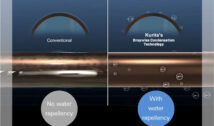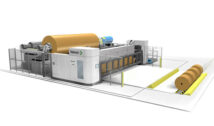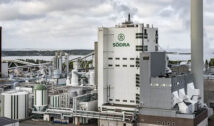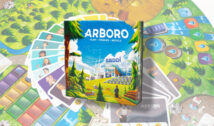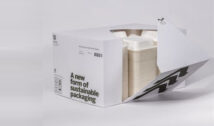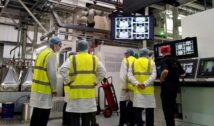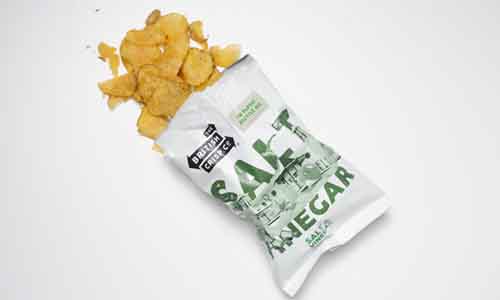
A comprehensive new study1 by Aquapak, ‘FMCG flexible packaging: accelerating the move from plastic to paper’, based on research with 100 UK packaging experts responsible for packaging R&D, technology, design and sustainability for FMCG brands, reveals that the majority (92%) plan to stop using plastic in their consumer packaging altogether. The report, launched today at the Rethinking Materials Innovation and Investment Summit in London, shows that paper and paperboard are the replacement materials of choice, followed by new polymers, bioplastics, and multi-materials.
However, despite the commitment to move away from plastic, the timeframe for transition is still considerable, with 27% of packaging experts expecting this to happen by 2027, 35% by 2028 and 28% by 2029. Just under one third (30%) described the move to new packaging materials in their business as too slow, 58% described it as ‘moderate’ and only 11% said it was fast. Crucially, the majority (87%) want the switch to alternative materials to replace conventional plastics to take place more quickly.
Currently, the main barriers to using more environmentally friendly options are the higher cost of alternative packaging, which was cited by 53% of respondents, the availability of alternative materials (50%) and ensuring the functionality and product protection remains the same (46%).
When asked about the key drivers that would help the FMCG sector speed up new material development and implementation, the research showed that 70% of respondents believed that more ambitious recycling targets were key, 62% wanted to see increased investment in new materials, and 54% said greater collaboration to accelerate R&D was needed. Half said that an industry-wide commitment to move away from conventional plastic was necessary, whilst a further 47% cited tighter environmental regulation through taxation of materials with poor environmental performance was important.
Dr John Williams, Chief Technical Officer at Aquapak, said: “Our study shows that the FMCG sector is highly cognisant of the need to move away from conventional plastics to more environmentally friendly materials which offer better end-of-life outcomes, be it improved recyclability or biodegradation to make life easier for their customers and other stakeholders.
“There is undoubtedly some confusion in the market by the number of “new” materials which all offer some potential, but all too often exaggerate the properties and availability of the material, causing delays in the use of genuine solutions by using valuable time in the packaging development process. It is important that there is an acceleration in the use of materials which are available at scale, offer the required functionality, run down existing conversion lines, and have a viable end-of-life solution to the consumer. These solutions are available now and, in the market, but only in low numbers.
“Our research also suggests that the sector needs to be bolder in its commitment to new packaging materials. While 37% say they are more focused on switching to innovative, environmentally friendly materials, a quarter are developing existing materials and 38% are placing equal importance on both. Is this really embracing innovation and change or sitting on the fence until regulation forces the industry’s hand? New materials already exist and can facilitate the move from plastic to solutions which are functional, provide the product protection needed but do not harm the environment when they come to the end of their useful life.”
Hydropol – performs like plastic, recycles like paper
Aquapak Polymers Ltd specialises in designing and manufacturing new polymer-based material technologies that uniquely deliver both performance and environmental responsibility at scale. HydropolTM, is a groundbreaking high-performance polymer developed by Aquapak’s own research chemists that enables product and packaging design to meet all necessary functional and performance requirements, whilst increasing recycling, reducing harmful plastic pollution and supporting the circular economy. When extrusion coated or laminated onto paper, HydropolTM adds strength and barriers to oxygen, oil and grease, and its solubility allows 100% paper fibre recovery through paper recycling mills.
First fully recyclable paper crisp packet
Hydropol is used in the first domestically recyclable paper crisp packet unveiled in March, which has been developed in partnership with The British Crisp Co. and Evopak, a manufacturer of sustainable paper based flexible packaging.
The new packet provides an environmentally friendly and scalable alternative to the eight billion2 packets thrown away each year in the UK, ending up in landfill or are incinerated. The packets have been certified as recyclable in standard paper recycling mills by OPRL, the only evidence-based on pack recycling labelling scheme. This means they feature the green recycle logo and can be disposed of in consumer kerbside collections along with other paper material, unlike other crisp packets.
Hydropol can be recycled, re-pulped, composted and is distinctively compatible with anaerobic digestion. Furthermore, if unintentionally released into the natural environment, Hydropol – which is non-toxic and marine safe – will dissolve and subsequently biodegrade. It does not break down into harmful microplastics, so it still has a safe end-of-life even if it is not disposed of as intended.
1 Research conducted by PureProfile with 100 packaging experts working for FMCG brands in the UK, in March 2024.
2 According to Statista, the UK devoured 8.3bn packets of crisps in 2017. By 2030, the consumer data firm expects that number to rise more than 30% to 11.1bn a year.





















